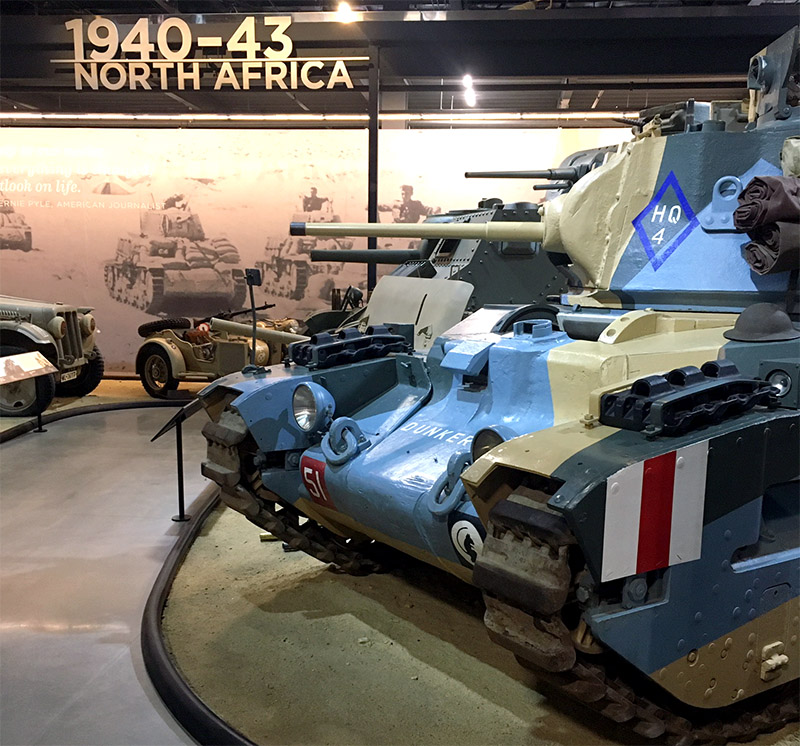Help Fuel Our Field Trips - Summer 2025 Fundraising Campaign
www.americanheritagemuseum.org
Donate to support our Fuel Our Field Trips fund for school field trip transportation and admissions grants before July 31st and your donations are matched, dollar-for-dollar, up to $25,000 by our gene...North Africa
Matilda MK.II – UK | TANK
Sd.Kfz 10 1-Ton – GER | PERSONNEL CARRIER/PRIME MOVER
Leichter Panzerspähwagen SdKfz 222 – GER | SCOUT ARMORED CAR
BMW R75 & Sidecar – GER | MOTORCYCLE & SIDE CAR
7.5 cm Pak 40 – GER | ANTI-TANK GUN
The North African Campaign of the Second World War started June 10th, 1940, when Fascist Italy declared war on Britain and France. It lasted until May 13th, 1943, when the last Axis troops in Africa surrendered in Tunisia, including the defeated Afrika Korps sent by Hitler to prop up his faltering Italian ally.
The United States officially entered the war against Germany on December 11, 1941. Struggling against Japan while arming and training its brand new mass armies in haste, the United States began direct military assistance to Allied forces in North Africa on May 11th, 1942. Canada provided a small contingent of 348 officers and enlisted. Australians, Indians, and South Africans also fought under British command in Egypt and Libya, where Britain’s 8th Army and the ‘Desert Rats’ were led by General Montgomery. Meanwhile, Free French forces struck out for North Africa from deep inside West Africa, as the Allies sought to drive the Axis out of Africa as a preliminary to the invasion of Italy and Germany.
The training, build-up, and transport of green American forces took time. While tanks and troops were supplied to the British, large numbers of American troops did not arrive in North Africa to join in the Allied effort until the start of Operation Torch in November, 1942. With some American material assistance, including tanks and aircraft and intelligence assets, British and Commonwealth forces fought the Axis in campaigns in the Libyan and Egyptian deserts (Western Desert Campaign). Anglo-American landings in Morocco and Algeria (Operation Torch), as well as Tunisia (Tunisia Campaign) book-ended a coordinated Allied strategy of driving and squeezing the last Axis armies in North Africa from east and west, until their total defeat and surrender in Tunisia May 1943.
The battle for North Africa was primarily a struggle for control of the Suez Canal and access to oil from the Middle East and raw materials from Asia, but also an effort to drive Italy out of the war as a prelude to invasion of southern Europe and a planned bombing campaign against Germany. It was the place German and American armies first faced off against each other. After early and terrible losses to the Germans, soldiers from America joined the ongoing Allied effort in North Africa and helped turn the tide of war decisively against the Axis. Next would come landings in Sicily and southern Italy. Based in a secured North Africa, bombers and invading armies would next bring the war home to the heartlands of the fascist nations themselves.




